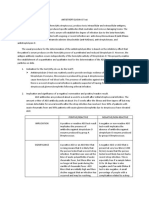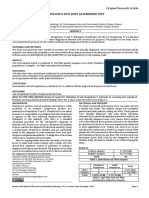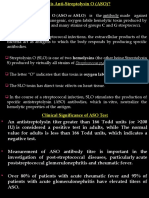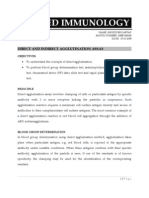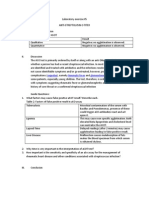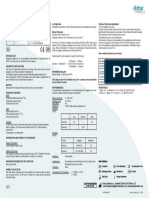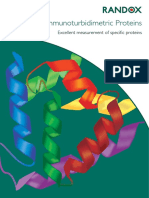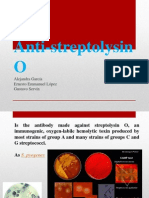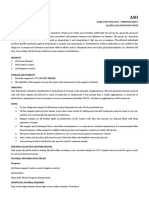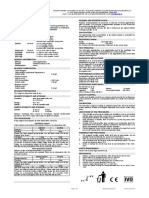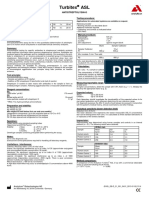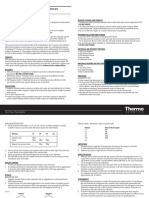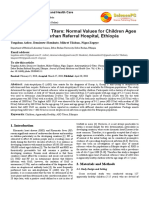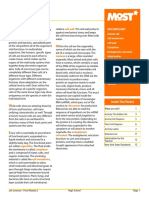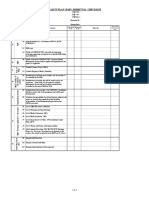0% found this document useful (0 votes)
435 views3 pagesAso (Antistreptolysin O) PDF
This document provides information about the ASO (Antistreptolysin O) test performed by the Chemistry department. The test detects antibodies to Streptolysin O to help diagnose current or past group A streptococcal infections or rheumatic fever. Specimens are sent to Mayo Medical Laboratories for testing. The turnaround time is 1-3 days and testing is performed daily Monday through Saturday. A blood sample is collected in an SST tube and centrifuged to separate serum for testing.
Uploaded by
Ibrahim SiddigCopyright
© © All Rights Reserved
We take content rights seriously. If you suspect this is your content, claim it here.
Available Formats
Download as PDF, TXT or read online on Scribd
0% found this document useful (0 votes)
435 views3 pagesAso (Antistreptolysin O) PDF
This document provides information about the ASO (Antistreptolysin O) test performed by the Chemistry department. The test detects antibodies to Streptolysin O to help diagnose current or past group A streptococcal infections or rheumatic fever. Specimens are sent to Mayo Medical Laboratories for testing. The turnaround time is 1-3 days and testing is performed daily Monday through Saturday. A blood sample is collected in an SST tube and centrifuged to separate serum for testing.
Uploaded by
Ibrahim SiddigCopyright
© © All Rights Reserved
We take content rights seriously. If you suspect this is your content, claim it here.
Available Formats
Download as PDF, TXT or read online on Scribd
/ 3
